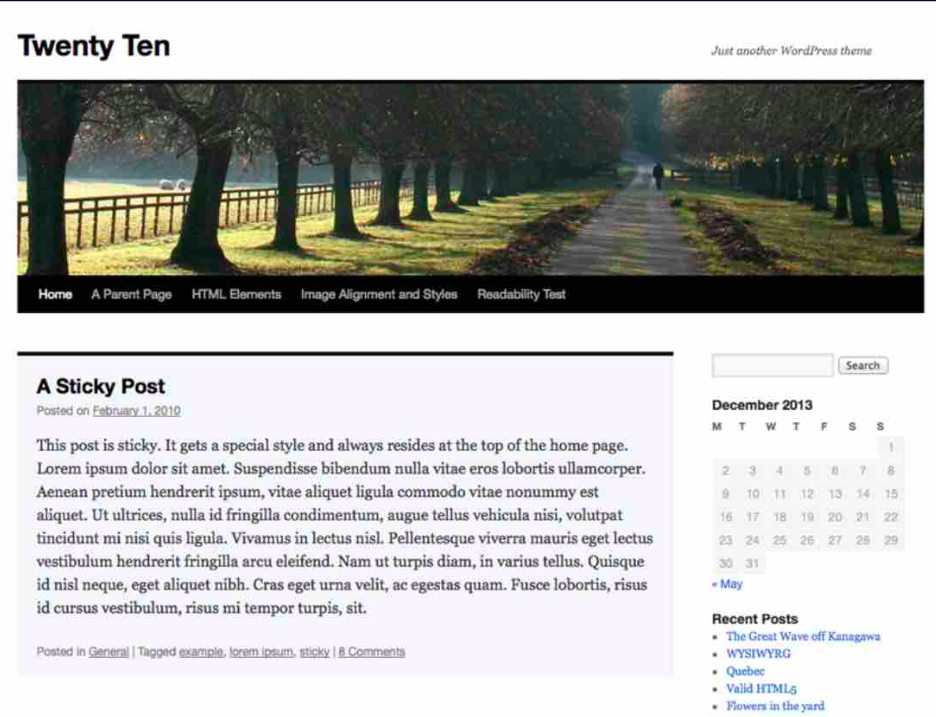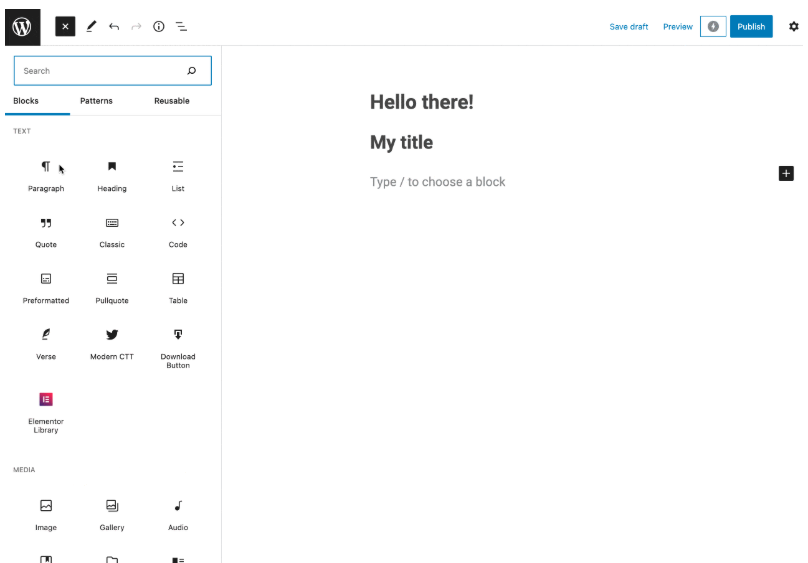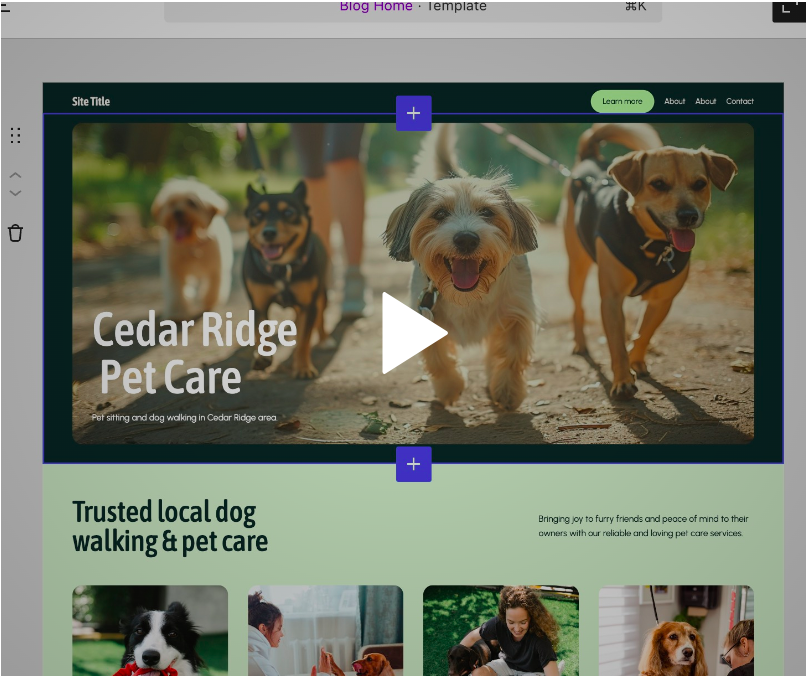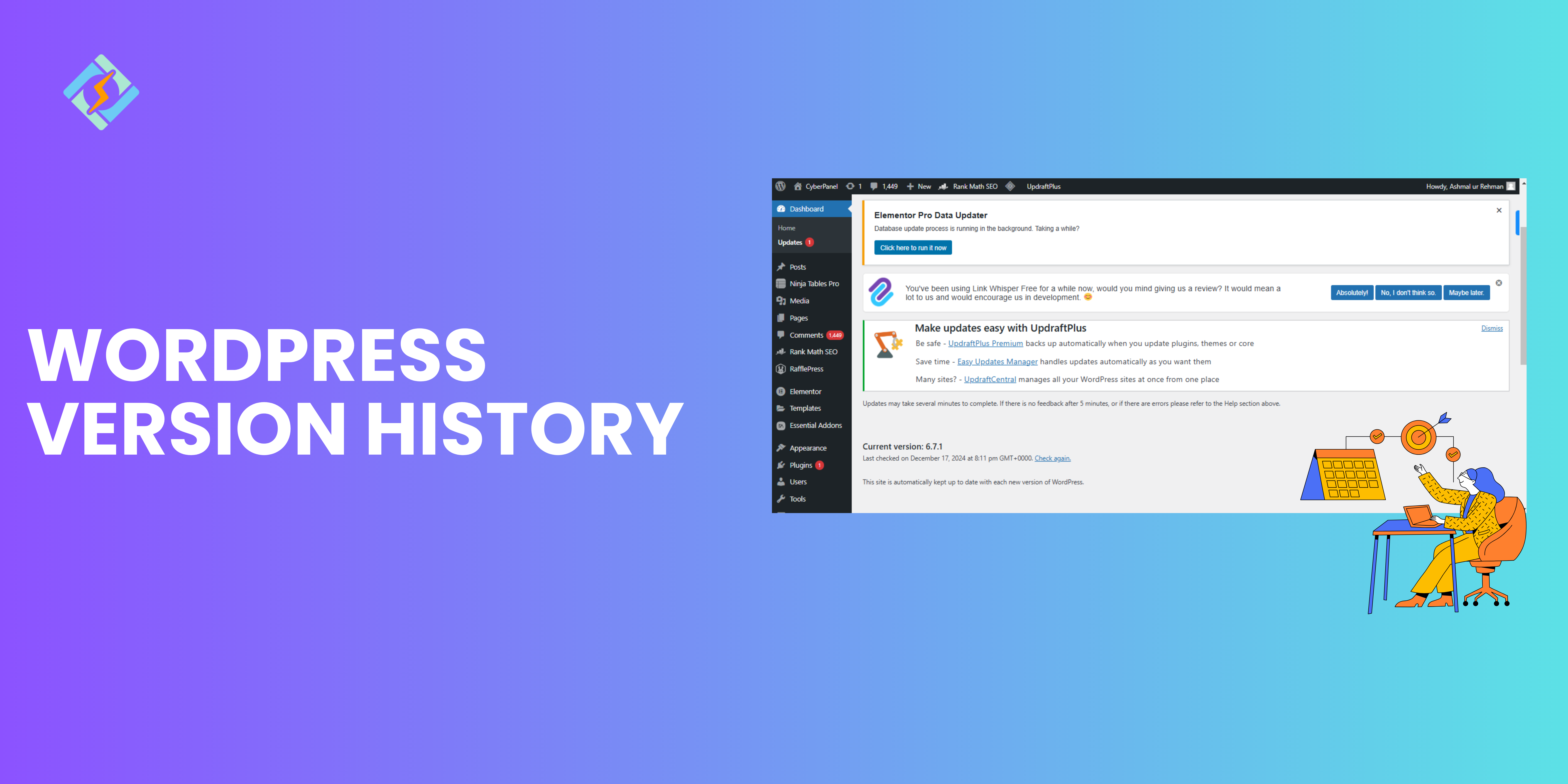40% of websites on the internet today are powered by WordPress! But do you know the history of the very first WordPress version?
WordPress is the leading platform for building websites globally and a household name in website development. It powers more than 40 % of all websites online, and over 100 versions of WordPress have been introduced in the past 19 years since its launch.
With an impressive 835 million sites, it stands out as the leading content management system, making it the go-to choice for creators everywhere.
In its 20-year history, WordPress has seen over 550 versions since its initial release in 2003. The most recent version, 6.4, has surpassed 6.3.
A WordPress version is a particular release of the WordPress content management system that enables users to build and edit content on a website.
But the question remains? Why so many versions? What is the WordPress version history? What makes a WordPress version important? Let’s get started.
Get exclusive access to all things tech-savvy, and be the first to receive
the latest updates directly in your inbox.
The Birth of WordPress: The First WordPress Version
The first WordPress Version 0.7 was launched by British and American Developers Mike Little and Matt Mullenweg in May 2003.
WordPress was created after the original blogging software b2/cafelog was dumped by its primary developers. In 2003, two b2/cafelog users, Matt Mullenweg, and Mike Little, chose to develop a new platform based on b2/cafelog.
On May 27, 2003, Matt introduced the first version of WordPress, which was met with enthusiasm from the community. This version was built on the foundation of b2 Cafelog but came with special enhancements. It featured a revamped admin interface, and fresh templates, and produced XHTML 1.1 compliant templates. Even in the first WordPress version 0.7, WordPress created a simple and clean user-friendly interface to post content. Allowing users to design, install, and configure their blogs easily.
WordPress Version 1.0: A Milestone Release
WordPress version 1.0 was released in Jan 2024, This release was not just an upgrade but a statement!
Now WordPress version 1.0 wasn’t only a blogging tool, it served as a platform for serious website creators. It focused on customization, formatting, and commenting.
Matt didn’t stop after the initial release and kept busy enhancing and refining the platform. In 2004, just a year after the original release, version 1.0, dubbed “Davis,” came out. A few months later, version 1.2 was introduced, bringing plugins into the mix and allowing users to create and customize their features to share with the expanding community. While some coding skills were still necessary to guide WordPress, this was a significant move toward the Content Management System we recognize today.
WordPress Version 2.x: Key Changes & Enhancements
The idea of themes to improve website layout was first presented by WordPress. This WordPress version introduced tools that made life easier for users and developers alike.
“Version 1.5 (Strayhorn) introduced a Theme system and featured the introduction of static pages, bringing WordPress to be poised as a content management system,” says WordPress.org.
The initial default theme, called Kubrick, has been introduced. Additionally, a significant new feature is the establishment of the plugin directory, which links developers with users.
The 2.0 version of WordPress, called “Duke,” really cements WordPress’s place as a go-to blogging platform. After months of hard work, the TinyMCE visual editor is now part of the WP Core and is ready for us to use.

Developed by the TinyMCE team along with Andy Skelton, this open-source editor lets you edit text online and see your changes instantly (WYSIWYG, or What You See Is What You Get).
This changes the game for content creation, making it super easy to upload images, videos, and files.
Along with this, we also get permanent caching and a fresh user role system. Plus, the Akismet plugin, which has been included by default ever since, helps keep spam and unwanted comments at bay.
WordPress Version 3.x: The Growth Era
In June 2010, Automattic, the company established by WordPress co-founder Matt Mullenweg, transferred the ownership of the WordPress trademark and logo to the WordPress Foundation. This was a pivotal moment in the history of WordPress, as it guaranteed the platform’s continued growth and independence from any single company or group of developers.
On June 17, 2010, WordPress 3.0 was launched, marking a significant advancement for WordPress as a content management system (CMS). This version introduced numerous features, including custom post types, enhanced custom taxonomies, custom backgrounds, headers, menus, and contextual help on admin screens. Additionally, the WordPress MU project was integrated into the core of WordPress, enabling the creation of Multisite networks.
The release also featured the Twenty Ten theme, which initiated the practice of introducing a new default theme each year.

WordPress 4.x: Mobile and Media Take Centre Stage
WordPress version 4.0 and its later releases aimed to make things super user-friendly for folks who aren’t into coding. Features like the customizer let you play around with your site in real time, so you can tweak things and see the results right away, all without writing any code.
But don’t worry, WordPress still packs a punch for developers too. With updates like WP_Site_Query and WP_Network_Query, skilled programmers have all the tools they need to take charge of their sites, while WordPress keeps enhancing the experience for them as well.
Users can now edit images directly within the editor and view their gallery previews simultaneously. WordPress 3.9 also brought live widget previews, audio playlists, and various other improvements.
WordPress 5.x: The Gutenberg Revolution
In 2018, WordPress 5.0 launched, introducing a completely new editing interface. This new block editor was referred to as Gutenberg.
The block editor continued to be the central focus of WordPress development as the community shifted towards broader adoption. This helped people create content on complex layouts but without writing a single line of code. An overall better visual editing experience and see how it really looks to a viewer.

In recent years, WordPress has been working hard to enhance the block editor, aiming to provide a complete site editing experience.
WordPress Version 6.x: Current Features and Improvements (2023)
The latest WordPress version is 6.0. Now the most advanced WordPress Version named “Shirley” which was released on November 07, 2023.
It offers a a CMS that’s quicker, secure and simpler to use or navigate. You can tailor the header, footer, with blocks and you also get ready-made elements that create professional layouts in no time. With these tools, WordPress 6.x caters to everyone, from small business owners to enterprise-level developers.
Then the latest WordPressVersion 6.5, titled ‘Regina‘, was launched on April 2, 2024, bringing over 110 performance enhancements aimed at boosting speed and user experience.
Notable improvements include a new Font Library for custom typography, a cover block that automatically selects overlay colors, and various design elements to enhance user engagement.
This update also prioritizes collaboration enhancements in the Gutenberg editor and adds support for the AVIF image format, allowing for higher quality images with smaller file sizes.
Following this, WordPress 6.6, released on July 16, 2024, is called ‘Dorsey’ and introduces features such as pattern overrides, a grid block for easier layout creation, and an auto-update function for plugins with rollback options.
The 6.6 update places a strong emphasis on performance improvements, including faster template loading times and 58 accessibility fixes, all aimed at providing a smoother user experience.
Looking ahead, The WordPress Current Version 6.7 is released on November 5, 2024, and will further refine the block editor, enhance security protocols, and improve the WordPress REST API for better integration.
In summary, these updates are designed to enhance performance, user experience, and developer flexibility while maintaining stability and security across the platform. WordPress 6.7 introduces a variety of exciting new features, design tools, and bug fixes to improve your website building experience. If you’re using WordPress.com, your sites will be updated automatically, allowing you to take advantage of these enhancements without any extra effort on your part.

How WordPress Versions Have Shaped Website Development?
Over the years, WordPress have evolved from being a simple blogging tool to a full-fledged CMS. Full site editing made its debut in WordPress 5.9, allowing users to play around with visual elements like font pairings and image filters using the adaptive navigation block.
Then came WordPress 6.0, which enhanced the user experience with a block-locking interface and better theme export options. Following that, WordPress 6.1 made further improvements to full-site editing features. The most recent version, WordPress 6.2, rolled out a new Site Editor along with extra functionalities.
Even though there are ongoing worries about slow adoption rates, legacy code issues, and user experience challenges, the WordPress project is still looking ahead with optimism. Performance has become a key focus, aiming to speed things up with support from Google. Despite the hurdles, the WordPress community is dedicated to improving the platform, solidifying its status as a top CMS.
Conclusion
The WordPress Versions have evolved remarkably over the years. This CMS has become super reliable, now driving more than 43% of the web. With constant updates and fresh features, it remains the top choice for publishing and boosting content for search engines.
In the coming months and years, most of the contributors will concentrate their efforts on Gutenberg. The initial enhancements and developments are set to take place in the Full Site Editing project, which is currently in its early phases.
The system is designed to cater to the needs of all users, which contributes to its status as the most widely used content management system available. Today, thousands of jobs depend on WordPress, ranging from theme and plugin development to the ease of managing daily blogs. As such, WordPress remains an essential platform for the future.
Still not sure? Don’t worry! We have a detailed video for you.
FAQ’s
1. What is the most recent version of WordPress available?
As of [insert date], the most recent version of WordPress is 6.x. This version includes full-site editing capabilities, performance enhancements, and improved security measures.
2. How can I find out what version of WordPress I am using?
To find your current WordPress version, log into your dashboard and navigate to “Updates” in the Dashboard menu. Your version number will be shown there.
3. Why is it crucial to keep WordPress updated to the latest version?
Keeping WordPress updated allows your website to take advantage of new features, better performance, and critical security updates that safeguard against potential threats.
4. What are the key updates brought by WordPress 3.0?
WordPress 3.0 brought significant enhancements such as custom post types, the multisite capability, and a menu editor, which collectively elevated WordPress into a robust content management system.
5. Is WordPress 6.x an improvement over previous versions?
Absolutely! WordPress 6.x offers enhancements in performance, security, and user experience, featuring tools like full-site editing and improved block editing, making it suitable for both newcomers and seasoned developers.
6. What is the Gutenberg editor in WordPress?
The Gutenberg editor, launched with WordPress 5.0, is a block-based content editor that enables users to design intricate layouts visually, eliminating the need for coding skills.
7. Are all versions of WordPress still receiving support?
No, WordPress mainly provides support for the latest version and its most recent predecessors. Older versions may not get security updates, which can pose risks for users.



